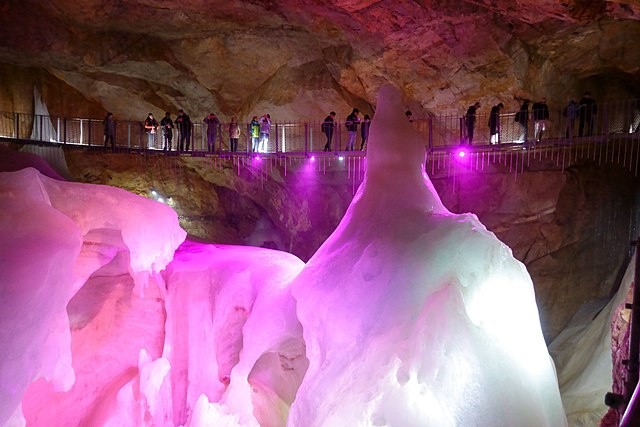According to studies, the Alpine Ice Caves in Austria are getting smaller due to climate change. Only a small number of the thousands of known ice caves in the world have received in-depth research, with Austria having one of the highest densities.
Eight ice caves with descending morphology in Styria, Tyrol, Upper Austria, and Carinthia have now been thoroughly examined over the past few years by a team of researchers and scientists from the Universities of Belfast and Innsbruck using a comparative research methodology.

According to Tanguy Racine, single ice caves have already been the subject of some solid studies. The research, which concentrated on the development of ice in several caves all of which are in comparable settings-similar altitude as well as a steep to vertically sloping geometry-was the first time that a comparative analysis had been done.
Racine is from the Quaternary Research Group at the Department of Geology. He covered the subject in great detail in his dissertation. These caves' ice formations are the result of solid precipitation, specifically snow that slides into the cave during the winter and freezes there when the temperature drops.
The Department of Geology's Charlotte Honiat and Tanguy Racine collect ice samples from the Tyrolean Guffert Eisschacht for laboratory analysis.
Ice Cave Development
The team used the radiocarbon method to gauge the age of the layers of ice in the caves, which were frequently several meters thick. Racine explains the procedure by saying that the research team concentrated on the smallest inclusions of wood samples in the ice layers to date the ice. It is possible to pinpoint the exact age of these wood fragments that fell into the ice caves from the outside.
The extensive database, which includes 107 dates of wood samples in the ice, provides a precise picture of the ice accumulation and deposition in the ice caves over some time up to 2000 years ago.
Using this strategy, the team was able to demonstrate the theory that historically recorded glacier advances, such as those that occurred during the "Little Ice Age," are also reflected in the growth of ice mass in ice caves and occur at the same time.
The geologist goes on to say that similar ups and downs in the ice development can be seen in glaciers and ice caves for the past two thousand years. How much snow there is in the winter and how hot it is in the summer are crucial factors for both. The findings also demonstrate that a significant portion of Austria's underground ice dates back to the "Little Ice Age," which occurred between the 15th through 19th centuries.
Read also : Alpine Glacier Collapse Kills Six People in Italy; Snowpack and Icy Rock Slams Into the Hikers
Shrinking Ice Caves
Racine notes that glaciers are not the only ones that have recently displayed a negative mass balance that is above average. The balance of ice caves is negative as well. The effects of rising temperatures as well as decreasing precipitation have also had a significant impact on ice caves.
The study demonstrates an ice retreat rate that has never been recorded during our 2000-year measurement period. Several instances come to mind: For instance, monitoring in the Guffert Eisschacht in Steinberg am Rofan revealed a decline in the snow surface of nearly three meters between 2019 and 2021, and Eisgruben Eishöhle at Sarstein, Upper Austria has lost 10 meters of ice thickness in the past 40 years. Upper Austria's Kraterschacht in the Sengsen Mountains lost 20 meters of ice in that time.
Similar to the glaciers, this development can be attributed to human-caused climate change. Racine clarifies that It must be assumed, particularly for the smaller and medium-sized ice caves, that they will drastically lose ice mass or even become completely ice-free in the upcoming years to decades. The clock is loudly ticking.
It must be assumed, particularly for the smaller and medium-sized ice caves, that they will drastically lose more ice mass or even result in becoming become completely ice-free in the upcoming years to decades. The clock is loudly ticking.
To preserve the important climate data for science over the long term, the Innsbruck researchers will carefully remove ice cores from alpine ice caves in the upcoming years and store them cooled, Science Daily reports.
Related article : Rapid Melting of Alpine Permafrost May Cause Global Warming
© 2025 NatureWorldNews.com All rights reserved. Do not reproduce without permission.





